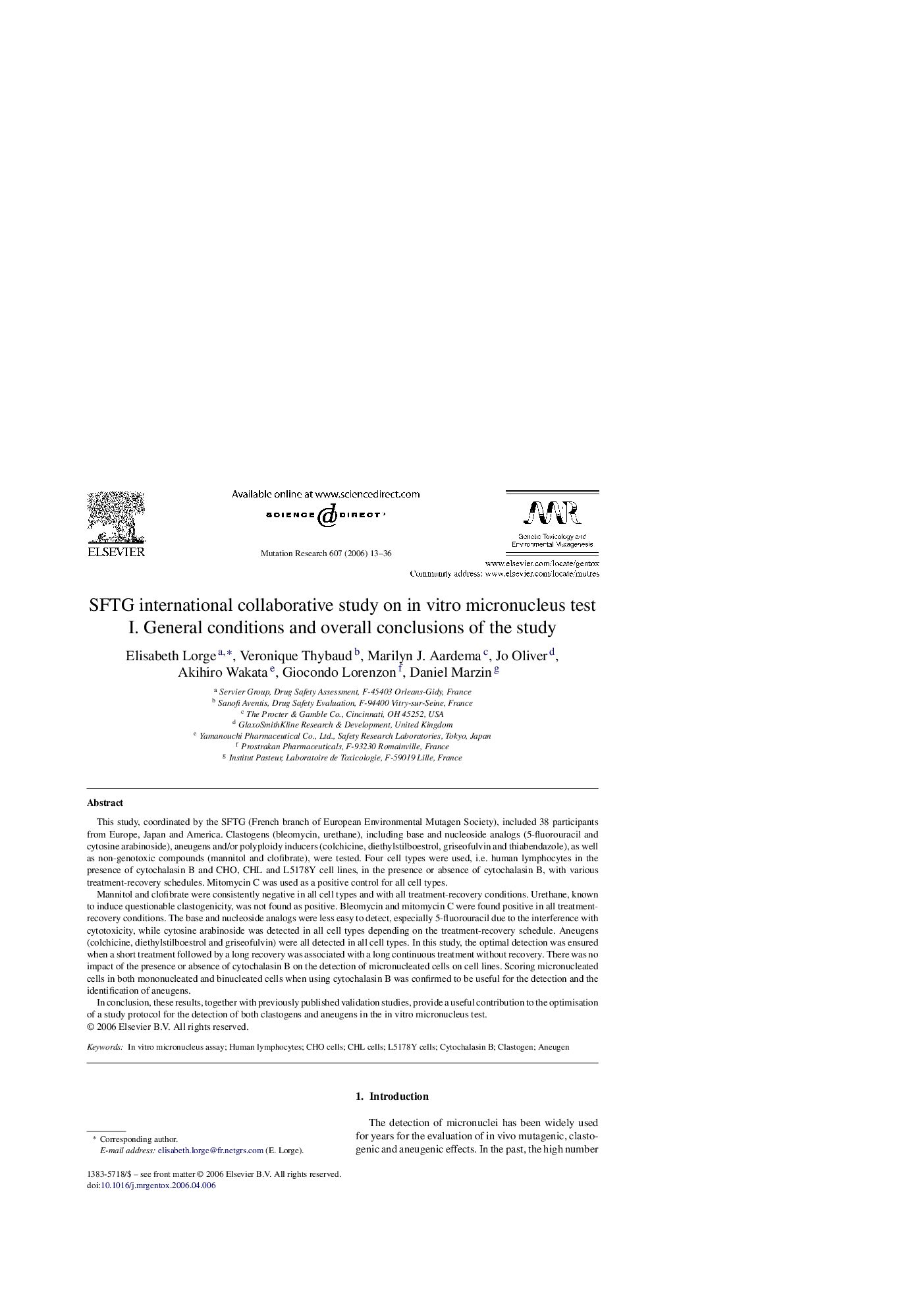| Article ID | Journal | Published Year | Pages | File Type |
|---|---|---|---|---|
| 2149423 | Mutation Research/Genetic Toxicology and Environmental Mutagenesis | 2006 | 24 Pages |
This study, coordinated by the SFTG (French branch of European Environmental Mutagen Society), included 38 participants from Europe, Japan and America. Clastogens (bleomycin, urethane), including base and nucleoside analogs (5-fluorouracil and cytosine arabinoside), aneugens and/or polyploidy inducers (colchicine, diethylstilboestrol, griseofulvin and thiabendazole), as well as non-genotoxic compounds (mannitol and clofibrate), were tested. Four cell types were used, i.e. human lymphocytes in the presence of cytochalasin B and CHO, CHL and L5178Y cell lines, in the presence or absence of cytochalasin B, with various treatment-recovery schedules. Mitomycin C was used as a positive control for all cell types.Mannitol and clofibrate were consistently negative in all cell types and with all treatment-recovery conditions. Urethane, known to induce questionable clastogenicity, was not found as positive. Bleomycin and mitomycin C were found positive in all treatment-recovery conditions. The base and nucleoside analogs were less easy to detect, especially 5-fluorouracil due to the interference with cytotoxicity, while cytosine arabinoside was detected in all cell types depending on the treatment-recovery schedule. Aneugens (colchicine, diethylstilboestrol and griseofulvin) were all detected in all cell types. In this study, the optimal detection was ensured when a short treatment followed by a long recovery was associated with a long continuous treatment without recovery. There was no impact of the presence or absence of cytochalasin B on the detection of micronucleated cells on cell lines. Scoring micronucleated cells in both mononucleated and binucleated cells when using cytochalasin B was confirmed to be useful for the detection and the identification of aneugens.In conclusion, these results, together with previously published validation studies, provide a useful contribution to the optimisation of a study protocol for the detection of both clastogens and aneugens in the in vitro micronucleus test.
